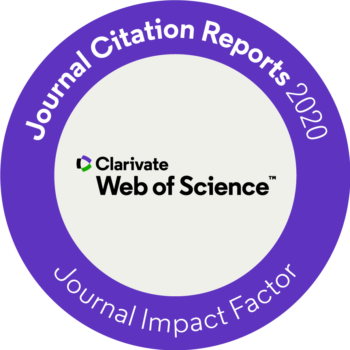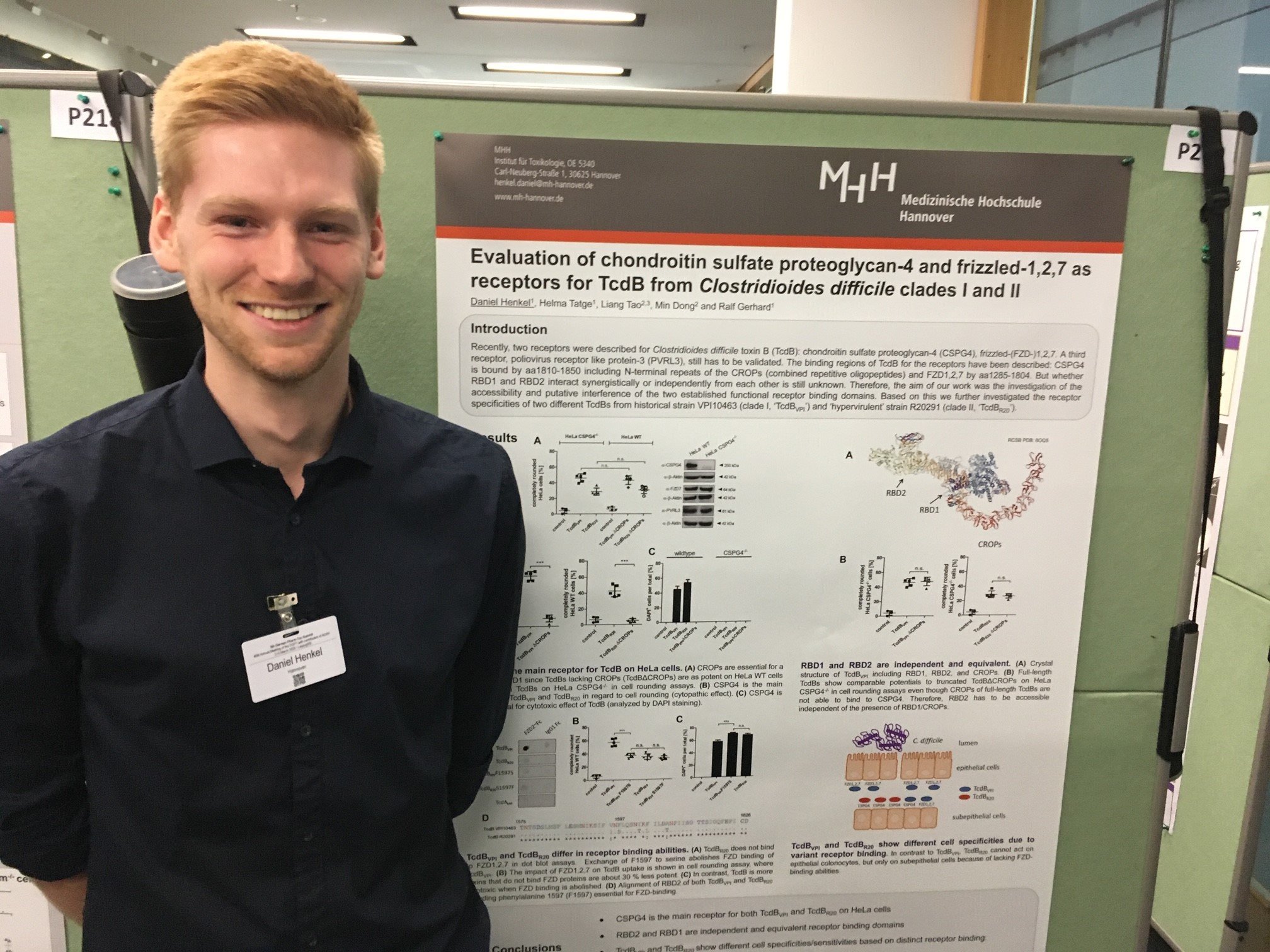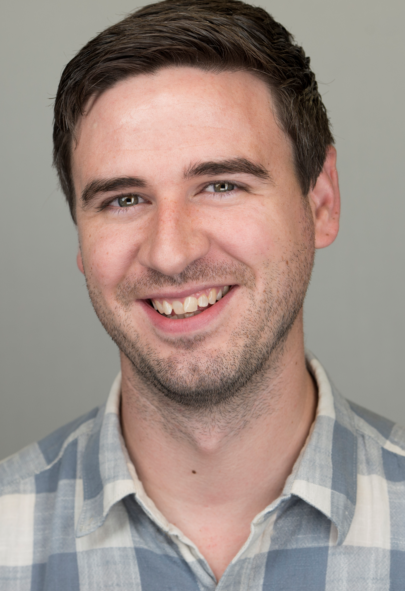
Journal Menu
► ▼ Journal Menu-
- Toxins Home
- Aims & Scope
- Editorial Board
- Reviewer Board
- Topical Advisory Panel
- Instructions for Authors
- Special Issues
- Topics
- Sections & Collections
- Article Processing Charge
- Indexing & Archiving
- Editor’s Choice Articles
- Most Cited & Viewed
- Journal Statistics
- Journal History
- Journal Awards
- Society Collaborations
- Conferences
- Editorial Office
Journal Browser
► ▼ Journal BrowserNeed Help?
Announcements
9 July 2020
Open Access Agreement Between Jisc Collections and MDPI
We are delighted to announce the establishment of our Open Access agreement with Jisc Collections, which will allow UK institutions to benefit from access to article processing charge (APC) discounts and streamlined payment workflows.
All institutions participating in the agreement will also gain access to the MDPI online submission system where they can find full article metadata and pricing information for easy identification and additional transparency.
Eligible authors affiliated with the participating institutions are prompted to choose the corresponding Institutional Open Access Program (IOAP) when they submit an article via our online submission system.
About Jisc
Jisc's vision is for the UK to be the most digitally advanced education and research nation in the world. At its heart is the super-fast national research and education network, Janet, with built-in cyber security protection. Jisc also provides technology solutions for its members (colleges, universities and research centres) and customers (public sector bodies), helps members save time and money by negotiating sector-wide deals and provides advice and practical assistance on digital technology. Jisc is funded by the UK higher and further education and research funding bodies and member institutions.
For more information, contact helen.dobson@jisc.ac.uk.
About MDPI
MDPI is a publisher of fully peer-reviewed, Open Access journals with a focus on thorough and rapid editorial processing. Its aim is to ensure that high-quality research is verified and made available to the research community as quickly as possible. MDPI stands at the forefront of the Open Access movement, having launched its first online journal Molecules in 1996. Today, MDPI is a leader in Open Access publishing with over 250 journals across all research disciplines, and all content published under a Creative Commons Attribution License (CC BY).
For any questions about this agreement, please contact the MDPI IOAP team at ioap@mdpi.com.
29 June 2020
Updated Impact Factors Released in the Journal Citation Reports (Clarivate)

The updated citation metrics have been released in the Journal Citation Reports (JCR), published by Clarivate. The recent release of the JCR includes seventy-one MDPI titles. Out of these, 18 titles are newcomers, receiving a first Journal Impact Factor which is based on citation activity in 2019: Actuators, Agriculture, Biology, Biomedicines, Biosensors, Chemosensors, Children, Healthcare, Journal of Fungi, Journal of Personalized Medicine (JPM), Land, Life, Magnetochemistry, Membranes, Pharmaceuticals, Photonics, Separations and Toxics.
- Out of the previously listed journals, a total of 72 percent boast an increased Impact Factor.
- 25 journals are ranked among the top 25% of journals in at least one of the categories they are ranked for.
- Articles published in 2019 in MDPI journals account for approximately 17 percent of of articles published in gold Open Access journals covered in the Science Citation Index Expanded (SCIE) and Social Sciences Citation Index (SSCI).
First Impact Factors
| Journal | Impact Factor | Rank | Category | Details |
| Actuators | 1.957 | 31/64 (Q2) | • Instruments & Instrumentation | Link |
| Agriculture | 2.072 | 25/91 (Q2) | • Agronomy | Link |
| Biology | 3.796 | 19/93 (Q1) | • Biology | Link |
| Biomedicines | 4.717 | 30/138 (Q1) 36/270 (Q1) |
• Medicine, Research & Experimental • Pharmacology & Pharmacy |
Link |
| Biosensors | 3.240 | 24/86 (Q2) | • Chemistry, Analytical | Link |
| Chemosensors | 3.108 | 16/64 (Q1) 27/86 (Q2) 13/27 (Q2) |
• Instruments & Instrumentation • Chemistry, Analytical • Electrochemistry |
Link |
| Children | 2.078 | 50/128 (Q2) | • Pediatrics | Link |
| Healthcare | 1.916 | 62/102 (Q3) 45/87 (Q3) |
• Health Care Sciences & Services (SCIE) • Health Policy & Services (SSCI) |
Link |
| Journal of Fungi | 4.621 | 5/29 (Q1) 31/135 (Q1) |
• Mycology • Microbiology |
Link |
| Journal of Personalized Medicine | 4.433 | 24/165 (Q1) 10/102 (Q1) |
• Medicine, General & Internal • Health Care Sciences & Services |
Link |
| Land | 2.429 | 58/123 (Q2) | • Environmental Studies (SSCI) | Link |
| Life | 2.991 | 26/93 (Q2) 109/267 (Q2) |
• Biology • Microbiology |
Link |
| Magnetochemistry | 1.947 | 22/45 (Q2) 109/159 (Q3) 201/314 (Q3) |
• Chemistry, Inorganic & Nuclear • Chemistry, Physical • Materials Science, Multidisciplinary |
Link |
| Membranes | 3.094 | 53/143 (Q2) 129/314 (Q2) 23/89 (Q2) |
• Engineering, Chemical • Materials Science, Multidisciplinary • Polymer Science |
Link |
| Pharmaceuticals | 4.286 | 49/270 (Q1) | • Pharmacology & Pharmacy | Link |
| Photonics | 2.140 | 48/97 (Q2) | • Optics | Link |
| Separations | 1.900 | 53/86 (Q3) | • Chemistry, Analytical | Link |
| Toxics | 3.271 | 32/92 (Q2) 92/265 (Q2) |
• Toxicology • Environmental Sciences |
Link |
Updated Impact Factors
| Journal | Impact Factor | Rank | Category | Details |
| Agronomy | 2.603 | 18/91 (Q1) 65/234 (Q2) |
• Agronomy • Plant Sciences |
Link |
| Animals | 2.323 | 10/63 (Q1) 14/142 (Q1) |
• Agriculture, Dairy & Animal Science • Veterinary Sciences |
Link |
| Antibiotics | 3.893 | 23/93 (Q1) 64/270 (Q1) |
• Infectious Diseases • Pharmacology & Pharmacy |
Link |
| Antioxidants | 5.014 | 10/139 (Q1) 56/297 (Q1) 7/61 (Q1) |
• Food Science & Technology • Biochemistry & Molecular Biology • Chemistry, Medicinal |
Link |
| Applied Sciences | 2.474 | 161/314 (Q3) 32/91 (Q2) 88/177 (Q2) 62/154 (Q2) |
• Materials Science, Multidisciplinary • Engineering, Multidisciplinary • Chemistry, Multidisciplinary • Physics, Applied |
Link |
| Atmosphere | 2.397 | 48/93 (Q3) | • Meteorology & Atmospheric Sciences | Link |
| Biomolecules | 4.082 | 98/297 (Q2) | • Biochemistry & Molecular Biology | Link |
| Brain Sciences | 3.332 | 113/271 (Q2) | • Neurosciences | Link |
| Cancers | 6.126 | 37/244 (Q1) | • Oncology | Link |
| Catalysts | 3.520 | 65/159 (Q2) | • Chemistry, Physical | Link |
| Cells | 4.366 | 70/195 (Q2) | • Cell Biology | Link |
| Coatings | 2.436 | 10/21 (Q2) | • Materials Science, Coatings & Films | Link |
| Crystals | 2.404 | 10/26 (Q2) 165/314 (Q3) |
• Crystallography • Materials Science, Multidisciplinary |
Link |
| Diagnostics | 3.110 | 39/165 (Q1) | • Medicine, General & Internal | Link |
| Diversity | 1.402 | 119/168 (Q3) | • Ecology | Link |
| Electronics | 2.412 | 125/266 (Q2) | • Engineering, Electrical & Electronic | Link |
| Energies | 2.702 | 63/112 (Q3) | • Energy & Fuels | Link |
| Entropy | 2.494 | 33/85 (Q2) | • Physics, Multidisciplinary | Link |
| Foods | 4.092 | 27/139 (Q1) | • Food Science & Technology | Link |
| Forests | 2.221 | 17/68 (Q1) | • Forestry | Link |
| Genes | 3.759 | 53/177 (Q2) | • Genetics & Heredity | Link |
| Insects | 2.220 | 18/101 (Q1) | • Entomology | Link |
| International Journal of Environmental Research and Public Health (IJERPH) | 2.849 | 58/193 (Q2) 32/170 (Q1) 105/265 (Q2) |
• Public, Environmental & Occupational Health (SCIE) • Public, Environmental & Occupational Health (SSCI) • Environmental Sciences (SCIE) |
Link |
| International Journal of Molecular Sciences (IJMS) | 4.556 | 74/297 (Q1) 48/177 (Q2) |
• Biochemistry & Molecular Biology • Chemistry, Multidisciplinary |
Link |
| ISPRS International Journal of Geo-Information (IJGI) | 2.239 | 31/50 (Q3) 18/30 (Q3) |
• Geography, Physical • Remote Sensing |
Link |
| Journal of Clinical Medicine | 3.303 | 36/165 (Q1) | • Medicine, General & Internal | Link |
| Journal of Marine Science and Engineering | 2.033 | 31/66 (Q2) | • Oceanography | Link |
| Marine Drugs | 4.073 | 16/61 (Q2) | • Chemistry, Medicinal | Link |
| Materials | 3.057 | 132/314 (Q2) | • Materials Science, Multidisciplinary | Link |
| Mathematics | 1.747 | 28/324 (Q1) | • Mathematics | Link |
| Medicina | 1.205 | 107/165 (Q3) | • Medicine, General & Internal | Link |
| Metabolites | 4.097 | 95/297 (Q2) | • Biochemistry & Molecular Biology | Link |
| Metals | 2.117 | 18/79 (Q1) 185/314 (Q3) |
• Metallurgy & Metallurgical Engineering • Materials Science, Multidisciplinary |
Link |
| Micromachines | 2.523 | 56/92 (Q3) 23/64 (Q2) |
• Nanoscience & Nanotechnology • Instruments & Instrumentation |
Link |
| Microorganisms | 4.152 | 37/135 (Q2) | • Microbiology | Link |
| Minerals | 2.380 | 6/21 (Q2) 11/30 (Q2) |
• Mining & Mineral Processing • Mineralogy |
Link |
| Molecules | 3.267 | 70/177 (Q2) 141/297 (Q2) |
• Chemistry, Multidisciplinary • Biochemistry & Molecular Biology |
Link |
| Nanomaterials | 4.324 | 89/314 (Q2) 42/103 (Q2) |
• Materials Science, Multidisciplinary • Nanoscience & Nanotechnology |
Link |
| Nutrients | 4.546 | 17/89 (Q1) | • Nutrition & Dietetics | Link |
| Pathogens | 3.018 | 65/135 (Q2) | • Microbiology | Link |
| Pharmaceutics | 4.421 | 44/270 (Q1) | • Pharmacology & Pharmacy | Link |
| Plants | 2.762 | 58/234 (Q1) | • Plant Sciences | Link |
| Polymers | 3.426 | 16/89 (Q1) | • Polymer Science | Link |
| Processes | 2.753 | 59/143 (Q2) | • Engineering, Chemical | Link |
| Remote Sensing | 4.509 | 9/30 (Q2) | • Remote Sensing | Link |
| Sensors | 3.275 | 22/86 (Q2) 77/266 (Q2) 15/64 (Q1) |
• Chemistry, Analytical • Engineering, Electrical & Electronic • Instruments & Instrumentation |
Link |
| Sustainability | 2.576 | 120/265 (Q2) 26/41 (Q3) 53/123 (Q2) 6/8 (Q3) |
• Environmental Sciences (SCIE) • Green & Sustainable Science & Technology (SCIE) • Environmental Studies (SSCI) • Green & Sustainable Science & Technology (SSCI) |
Link |
| Symmetry | 2.645 | 29/71 (Q2) | • Multidisciplinary Sciences | Link |
| Toxins | 3.531 | 21/92 (Q1) 34/139 (Q1) |
• Toxicology • Food Science & Technology |
Link |
| Universe | 1.752 | 18/29 (Q3) 42/68 (Q3) |
• Physics, Particles & Fields • Astronomy & Astrophysics |
Link |
| Vaccines | 4.086 | 57/158 (Q2) 50/138 (Q2) |
• Immunology • Medicine, Research & Experimental |
Link |
| Viruses | 3.816 | 12/37 (Q2) | • Virology | Link |
| Water | 2.544 | 31/94 (Q2) | • Water Resources | Link |
Source: Clarivate 2020, InCites Journal Citation Reports®.
1 June 2020
Congratulations to Best Poster Award Winner at the 5th German Pharm-Tox Summit, Leipzig, Germany, 2020 (Sponsored by Toxins)
The editorial team of Toxins would like to congratulate the winner of the Best Poster Award, Daniel Henkel, at the 5th German Pharm-Tox Summit.

Here are the title and abstract of his work:
Evaluation of Chondroitin Sulfate Proteoglycan-4 and Frizzled-1,2,7 for Cytopathic and Cytotoxic Effects of TcdB from Historic and Hypervirulent Clostridioides difficile Strains
Daniel Henkel 1, Helma Tatge 1, Dennis Schoettelndreier 1, Liang Tao 2,3, Min Dong 2 and
Ralf Gerhard 1
1 Institute of Toxicology, Hannover Medical School, Hannover, Germany
2 Department of Urology, Boston Children's Hospital, Boston, MA, USA
3 Institute of Basic Medical Sciences, Westlake Institute for Advanced Study, Westlake University, Hangzhou, China;
Clostridioides difficile is a gram-positive and spore-forming bacterium that is the main cause of nosocomial, antibiotic-induced diarrhea. The clinical symptoms are caused by two exotoxins that are released by C. difficile (TcdA and TcdB). Both toxins are 300 kDa sized glucosyltransferases that inactivate small intracellular Rho-GTPases by mono-glucosylation. This leads to the destruction of the organisation of the actin cytoskeleton and to the rounding of the cells. This drastic morphological change is a valid and safe method to detect the activity of the toxins.
In order to enter the cells, the toxins first bind to their receptors on the cell surfaces, whereupon they are taken up into the cells by receptor-mediated endocytosis. So far, three receptors have been identified for the main virulence factor TcdB: chondroitin sulfate proteoglycan-4 (CSPG4/NG2), poliovirus receptor like 3 (PVRL3/nectin-3) and the Wnt receptor proteins Frizzled1,2,7 (FZD1,2,7). While the binding regions for CSPG4 and FZD1,2,7 have been identified, the functional binding to PVRL3 and a resulting toxin uptake has not yet been validated. Our investigations, however, show that the contribution of PVRL3 to toxin uptake is negligible.
The CSPG4 and FZD receptor binding domains of TcdB have only been investigated independently from each other, although they are located in close spatial proximity. In our work we have therefore investigated a possible dependence of both receptor binding domains and determined the respective proportion of the receptors on the effect of TcdB. For this purpose, we prepared recombinant TcdB from both the historical strain VPI10463 of Clade I (TcdBVPI) and the hypervirulent strain R20291 of Clade II (TcdBR20). In addition, we have used variants that can no longer bind either to CSPG4 (TcdBΔCROPs), or to FZD1,2,7 (TcdBVPIF1597S) or to either of the two receptors (TcdBVPIΔCROPs F1597S). In addition, we have used HeLa wild-type and HeLa CSPG4-/- cells complementarily in cell rounding assays and cytotoxicity tests. We could show that CSPG4 is the major receptor for both TcdBVPI and TcdBVPI in terms of cytopathic activity, accounting for estimated 70 % and 90 % effect, respectively. Furthermore, CSPG4 mediates almost exclusively the cytotoxic effect in HeLa cells.
In the historical TcdBVPI a phenylalanine (F1597) is essential for binding to FZD1,2,7, which is replaced by a serine in TcdBR20. Consequently, TcdB from the hypervirulent strain does not bind to FZD1,2,7. Against this background, we have prepared the mutant TcdBVPIF1597S, which showed a reduced cytopathic potency identical to that of TcdBR20.
By using toxins that specifically address one of two receptors, and by using HeLa cells, which lack CSPG4 as a receptor, in a complementary approach we evaluated additive function of CSPG4 and FZD1,2,7 for historical TcdBVPI. Both receptor binding sites can independently mediate toxin uptake. Thus, in case of TcdB the two-receptor model means an extension of the target cell spectrum – rather than increased cell specificity. The increased cell specificity is only achieved by the loss of functional FZD binding, as is the case with TcdBR20 from the hypervirulent strain. Our results now allow to attribute the stronger inflammatory effect of the hypervirulent C. difficile strains to the focused effect of TcdBR20 on CSPG4-positive cells, such as immune cells or cells of the enteric nervous system.
13 May 2020
COVID-19 Academic Resources Center

Since 1996, MDPI has been committed to supporting the research community by providing the latest research freely available and making relevant and useful research available as quickly as possible. The world is current experiencing a pandemic of COVID-19, and researchers are working extremely hard to understand it and find a cure.
The values MDPI holds strongly are particularly important at the moment, and we will continue to publish relevant, peer-reviewed research as quickly as possible in open access format. This means that it will immediately be available for researchers, health professionals, and the general public to read, distribute, and reuse. We believe that scientific advancements will be crucial to overcoming this pandemic, and will do everything we can to support researchers working looking for solutions.
COVID-19 Academic Resources Center contains a variety of information related to COVID-19 available from MDPI, including journal articles, special issues, and preprints, among others.
For more information, please visit: https://www.mdpi.com/covid-19
6 May 2020
2019 Toxins Young Investigator Award: Winner Announced
2019 Toxins Young Investigator Award
|
|
Professor Casewell’s research focuses on evolutionary and biomedical aspects of animal toxins. Following the completion of his PhD studies at Bangor University, UK, where he focused on characterising the composition of saw-scaled viper venoms, Nick worked in research and development at an antivenom manufacturing company. Thereafter, he won a research fellowship to investigate the evolution of fish venoms, before moving to Liverpool School of Tropical Medicine (LSTM), UK, in 2014 to take up a faculty position. In 2019, Nick was appointed as Professor of Neglected Tropical Diseases by LSTM, and he also currently holds the position of Wellcome Trust Research Fellow. He has published over 70 papers on animal toxins, and his most notable work relates to understanding the processes that generate toxin variation and how this information can be applied to better inform new treatment strategies for the world’s snakebite victims. |
It was a difficult decision given the number of high-quality applications for the award, and we would like to thank all the applicants from various fields of study for their participation, and all the Award Committee members for their efforts in evaluating the many applications. We congratulate the winner, Prof. Nicholas R Casewell, on his accomplishments. We wish him further success in his career.
For more information about Toxins awards, please visit https://www.mdpi.com/journal/toxins/awards.
6 May 2020
2020 Toxins Travel Award: Winner Announced
We are pleased to announce the winner of the 2020 Travel Award sponsored by MDPI and Toxins. The award was granted to an outstanding young researcher:
2020 Toxins Travel Award
|
|
Dr. Steve Peigneur is a Postdoctoral Researcher in the lab of Toxicology & Pharmacology at the Catholic University of Leuven (KU Leuven) in Belgium. He has published over 125 articles in peer-reviewed journals. In 2019, he obtained his PhD in Biochemistry at the Federal University of Minas Gerias in Belo Horizonte, Brazil. His research in the field of drug discovery and development mainly focusses on the characterisation of novel ligands for ion channels and receptors, starting from natural sources such as venomous animals and poisonous plants. The aim is to investigate toxins for their therapeutic or insecticidal potential. |
This has certainly been a difficult decision, given the volume of high-quality applications for the awards. We would like to thank all of the applicants for submitting what was collectively such a range of diverse and fascinating research topics and congratulate the winner on his accomplishments.
For more information about Toxins awards, please check: https://www.mdpi.com/journal/toxins/awards
15 April 2020
2019 Toxins Outstanding Reviewer Award: Winner Announced
We are pleased to announce the winner of the 2019 Outstanding Reviewer Award sponsored by MDPI and Toxins. This award was granted to two outstanding reviewers for the quality, timeliness, and volume of their reviews.
2019 Toxins Outstanding Reviewer Award |
Dr. Matthias Koch holds a Ph.D. in Analytical Chemistry and is Head of the BAM division that focuses on the trace analysis of organic pollutants in food and environmental matrices. His work over the last 20 years has aimed at developing and improving analytical procedures, standardization of methods, and developing reference materials. One of his main research areas in recent years has been the simulation and identification of transformation products, especially for food-related mycotoxins. He authored or co-authored more than 80 peer-reviewed papers. |
2019 Toxins Outstanding Reviewer Award
 |
Dr. Sumit Ghosh was awarded his Ph.D. in Cellular and Molecular Biology from North Dakota State University in the summer of 2012. He then continued his postdoctoral work in the field of Immunology at North Dakota State University, where he investigated the role of B lymphocytes and extracellular matrix components (ECM) components in allergic fungal asthma. He is a Registered Biosafety Professional, Certified Safety Professional l and currently serves on the Publication and Distance Learning Committee of American Biological Safety Association International (ABSA). Additionally, he serves on the editorial board of numerous national and international journals. He is an Environmental Health and Safety Leader with extensive research experience in Biological Safety, OSHA, EPA, DOT regulations, and in-depth knowledge of high-containment labs. He is currently Associate Director of Research Safety/Research Biosafety Officer at the Abigail Wexner Research Institute at Nationwide Children’s Hospital. |
We would like to congratulate the winners and thank them for their dedication and efforts in providing critical feedback to authors and contributing to upholding the standard and integrity of peer review.
For more information about Toxins awards, please check: https://www.mdpi.com/journal/toxins/awards
9 April 2020
Free Open Platforms to Support Academics During the COVID-19 Pandemic

As a leading Open Access publisher, MDPI is committed to fostering open scientific exchange in all forms across all disciplines. Due to the outbreak of COVID-19, many researchers have to stay at home and many academic conferences have been cancelled or postponed. In light of these changes, MDPI has adopted numerous initiatives that may help accelerate scientific exchange and provide support to the academics during this period.
Scholarly Community—Encyclopedia
Encyclopedia is an online reference created and curated by active scholars. It aims to highlight the latest research results as well as providing benchmark information for researchers and the general public interested in accurate and advanced knowledge on specific topics.
Comprehensive and Free Literature Database—Scilit
Scilit is a comprehensive, free database for scientists that uses a new method to collate data and index scientific material. Our crawlers extract the latest data from CrossRef and PubMed on a daily basis. This means that newly published articles are immediately added to Scilit.
Display Academic Achievements—SciProfiles
SciProfiles is an innovative social network for researchers and scholars that is developed by MDPI. In line with our broad mission, the purpose of SciProfiles is to accelerate discovery and innovation by facilitating immediate access to research results and providing opportunities for academic networking.
Organize and Participate in Conferences Online—Sciforum
Sciforum is an event planning platform that supports open science by offering the opportunity to host and participate in academic conferences. It provides an environment for scholarly exchange, discussion of topics of current interest, building of networks, and establishing collaborations.
Post Early Versions of Research Outputs—Preprints
Preprints is a platform dedicated to making early versions of research outputs permanently available and citable. We post original research articles and comprehensive reviews, and papers can be updated by authors at any time. Content on Preprints is not peer-reviewed, and feedback can be received from readers.
***
MDPI remains committed to open science and open data and has signed a statement, along with more than thirty scholarly publishers, showing our intention to facilitate sharing of new research findings as early on as possible. The initiative sees publishers collectively removing barriers to new research, in the face of a global healthcare crisis.
4 April 2020
Congratulations to the Winner of the Toxins Travel Student Award at Venom Week VII, Gainesville, Florid, USA, 2020 (Sponsored by Toxins)
The editorial team of Toxins would like to congratulate the winner of the Toxins Travel Student Award, Roberto Ponce Lopez, at Venom Week VII.

Here are the title and abstract of his work:
Sphingomylinase D-Crotamine Recombinant Fusion Protein as Immunogen for the Production of Antibodies Against Crotamine
Ponce-López, R.1,*, Olvera-Rodríguez, A.1, Borja-Jiménez, M.2, Neri-Castro, E.1, Olvera-Rodríguez, L.1, Alagón, A.1
1 Instituto de Biotecnología, Universidad Nacional Autónoma de México, Cuernavaca, Morelos, México; rockbert@ibt.unam.mx (P.-L.R.)
2 Facultad de Ciencias Biológicas, Universidad Juárez del Estado de Durango, Gómez Palacio, Durango, México
Background: Crotoxin (molecular weight (MW): ~24 kDa) and crotamine (MW: ~5 kDa) are two of the most studied neurotoxic components found in several rattlesnake venoms (Crotalus spp.). The former compound is well neutralized by antivenoms, whereas the latter is well known for its spastic paralysis symptom provoked in mice with no evidence of neutralization. Recently, it was reported that crotamine is the major toxin found in some neonate and juvenile Mexican rattlesnake venoms such as Crotalus molossus nigrescens (~50%). Currently, the available Mexican pit viper antivenoms neither recognize nor neutralize crotamine from C. m. nigrescens, possibly explained by its low immunogenicity due to its low molecular weight. Sphingomyelinase D (SMD) is a highly immunogenic enzyme (MW: ~30 kDa) found in Loxosceles spp. spider venom. To increase immunogenicity of a low molecular weight toxin, we hypothesized that our novel recombinant fusion protein, composed of crotamine from C. m. nigrescens and sphingomyelinase D from L. reclusa used as carrier, will contribute significantly to the generation of neutralizing antibodies against crotamine, preventing its spastic paralysis and lethality.
Methods: Crotamine cDNA was synthetized from the venom gland mRNA of a C. m. nigrescens individual from Mexico, and one plasmid containing L. reclusa SMD was available in the laboratory. By standard genetic engineering procedures, we cloned in tandem sphingomyelinase D and one crotamine isoform into the expression vector pQE30. This fusion protein was expressed in Origami Escherichia coli. Using the recombinant protein, we performed immunization protocols in rabbits and, during the scheme, we measured ELISA antibody titers to purified crotamine from C. m. nigrescens venom.
Results: The fusion protein was obtained at 3 mg/L of bacterial culture with the expected 37.5 kDa molecular mass as analyzed by SDS-PAGE and Western blot analysis. The fusion protein was lethal in mice (LD50 = 2.8 μg/g weight of mice) showing no effects of spastic paralysis. Based on ELISA and Western blot, serum samples of immunized rabbits reacted to crotamine.
Discussion/Conclusion: The SMD–crotamine fusion protein used as immunogen generates antibodies that recognize crotamine. We are using pre-incubation experiments to analyze the neutralization ability of antibodies to prevent spastic paralysis and lethality from crotamine in mice.
Keywords: crotamine; sphingomyelinase-d; molecular-carrier; recombinant-protein
Acknowledgment: Fordecyt 303045.
25 March 2020
MDPI Comment on the COVID-19 Virus
The world is currently suffering from a global pandemic of the corona virus COVID-19. MDPI expresses its sympathies for all of those affected by the virus and stands in solidarity with medical staff and researchers treating patients and searching for scientific solutions.
MDPI has previously published papers covering corona viruses in addition to new papers on the current outbreak, see all papers here. In particular, Viruses has published a number of Special Issues and papers on the topic (see here, here, and here) as well as a forthcoming Special Issue.
Alongside journal articles, MDPI has been a strong supporter of preprints, which are increasingly being used to rapidly disseminate the latest research, and we run the preprint server Preprints.org. Our database of research articles, Scilit, is free to use and covers all publishers including preprint servers. New papers are often in search results within hours of publication and users can set up alerts for new papers.
Our main priority during this period has been the health and safety of staff, and we continue to allow staff to work at home and closely monitor the situation in all locations in which we work. Despite the restrictions, we continue to provide a full publication service and, by close collaboration with our editorial boards and making use our in-house teams, ensure that there are no unnecessary delays in publishing vital research. Fast and open publication has always been at the core of MDPI values and is now more important than ever.
We hope that a solution to the current situation will emerge soon. In the meantime, we will do our best to continue communicating vital research in all fields.







